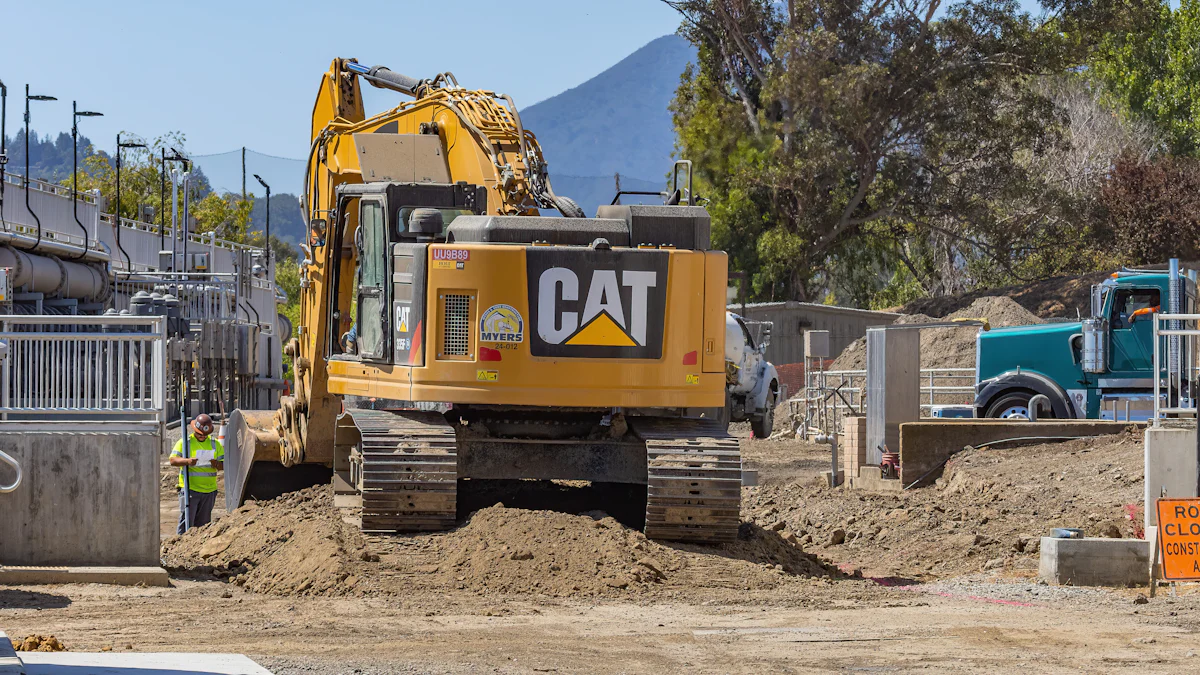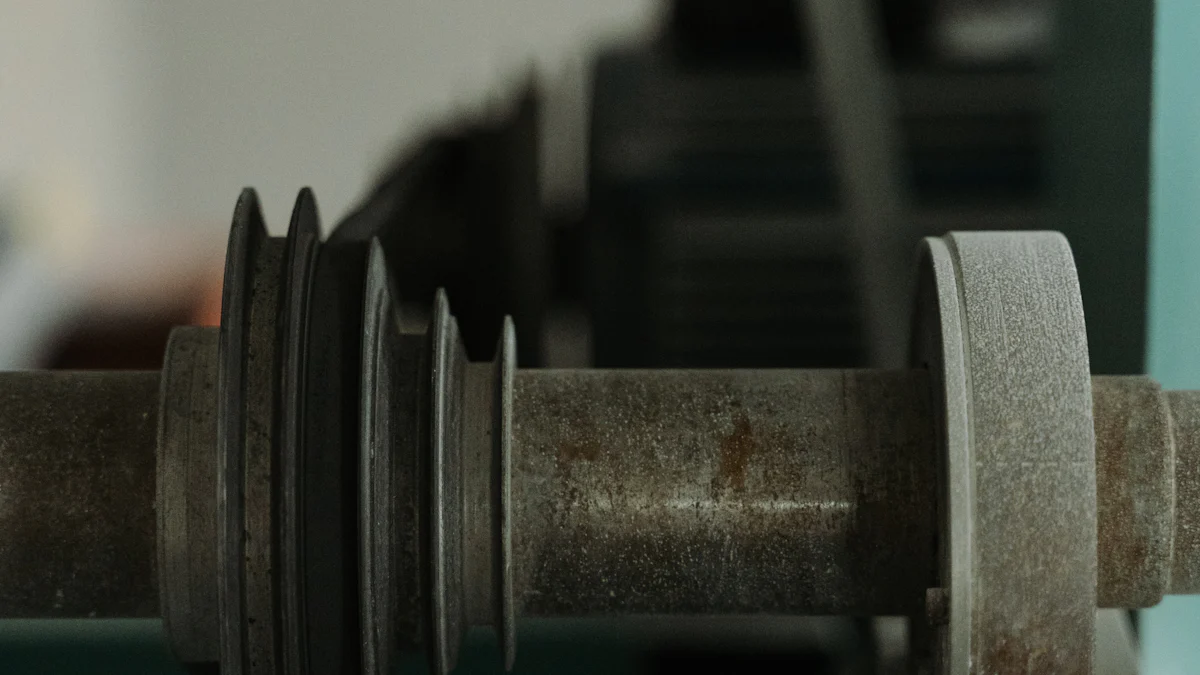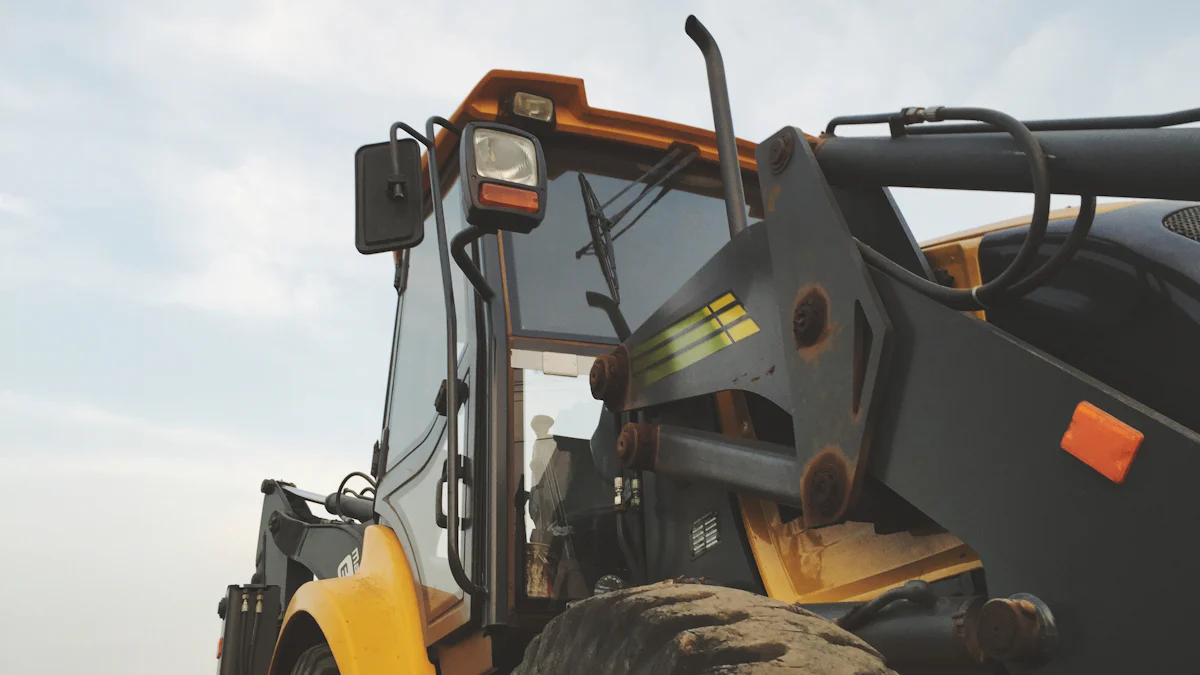
Choosing the right halfmoon parts plays a crucial role in keeping your equipment running smoothly. The wrong halfmoon parts can lead to poor performance, frequent breakdowns, and costly repairs. You need to focus on three key factors when making your choice. First, ensure the halfmoon parts are compatible with your equipment. Second, prioritize quality to guarantee durability and reliability. Lastly, source your halfmoon parts from trusted suppliers to avoid counterfeit or substandard products. These steps will help you maintain your equipment’s efficiency and extend its lifespan.
Key Takeaways
- Ensure compatibility by measuring dimensions and checking specifications before purchasing half moon parts.
- Prioritize quality by selecting parts made from durable materials like steel or aluminum to enhance performance and longevity.
- Source half moon parts from trusted suppliers to avoid counterfeit products and ensure reliability.
- Consult manufacturer recommendations for compatible parts to reduce the risk of errors and ensure optimal performance.
- Compare options based on price, quality, and warranty to make informed purchasing decisions.
- Regularly inspect half moon parts for wear and replace them as needed to maintain equipment efficiency.
Understanding Half Moon Parts

What Are Half Moon Parts?
Half moon parts are essential components designed to support the functionality of various types of equipment. These parts often have a crescent or semi-circular shape, which is why they’re called "half moon." You’ll find them in a wide range of applications, from industrial machinery to automotive systems. Their primary purpose is to ensure smooth operation and provide stability to the equipment they’re part of.
When you think about half moon parts, consider their role as connectors or stabilizers. They often help reduce wear and tear on other components by distributing pressure or maintaining alignment. Without these parts, your equipment might experience frequent malfunctions or reduced efficiency. Understanding their purpose is the first step in choosing the right ones for your needs.
Types of Half Moon Parts
Half moon parts come in various types, each tailored to specific functions and equipment. Knowing the different types can help you identify what suits your machinery best. Here are some common categories:
- Sealing Components: These parts prevent leaks and protect equipment from contaminants like dust or moisture. They’re often used in engines or hydraulic systems.
- Support Brackets: These provide structural support and help maintain the alignment of moving parts. You’ll see them in heavy machinery or automotive setups.
- Fasteners and Clips: These secure other components in place, ensuring stability during operation. They’re commonly found in assembly lines or mechanical systems.
- Rotational Parts: These include gears or bearings with a half-moon design, which facilitate smooth movement and reduce friction.
Each type serves a unique purpose, so it’s important to match the part to your equipment’s requirements. Always check the specifications and intended use before making a purchase. This ensures you get the right part for optimal performance.
Ensuring Compatibility with Your Equipment

Choosing the right halfmoon parts starts with ensuring they fit your equipment perfectly. Compatibility affects how well the parts function and how long they last. If you skip this step, you might end up with parts that don’t work as intended, causing unnecessary frustration and expense. Let’s break down how to check compatibility.
Measuring and Specifications
Measurements matter when selecting halfmoon parts. Start by identifying the exact dimensions of the part you need. Use tools like calipers or measuring tapes to get precise measurements. Pay attention to details like diameter, thickness, and length. Even a small mismatch can lead to improper fitting or reduced performance.
Specifications are equally important. Check your equipment’s manual or technical documentation for the required specifications. Look for details such as material type, load capacity, or operating temperature. These factors ensure the part can handle the demands of your equipment. If you’re unsure, take the old part with you when shopping to compare it directly with potential replacements.
Manufacturer Recommendations
Manufacturers often provide valuable guidance on compatible parts. Refer to your equipment’s user manual or contact the manufacturer directly. They usually recommend specific halfmoon parts designed to work seamlessly with their products. Following these recommendations reduces the risk of errors and ensures optimal performance.
Some manufacturers also offer compatibility charts or online tools. These resources let you input your equipment model and find matching parts quickly. Using these tools saves time and gives you confidence in your choice. Always prioritize parts that meet the manufacturer’s standards to avoid voiding warranties or causing damage.
By focusing on measurements, specifications, and manufacturer advice, you’ll find halfmoon parts that fit perfectly and perform reliably. Taking these steps ensures your equipment runs smoothly and avoids unnecessary downtime.
Evaluating the Quality of Half Moon Parts
When it comes to choosing halfmoon parts, quality should always be a top priority. High-quality parts ensure your equipment performs efficiently and lasts longer. Let’s explore two key aspects that help you evaluate the quality of these parts.
Material Types
The material of a halfmoon part plays a significant role in its durability and performance. Different materials suit different applications, so you need to choose wisely. Common materials include:
- Steel: Known for its strength and resistance to wear, steel is ideal for heavy-duty equipment. It handles high pressure and extreme conditions without deforming.
- Aluminum: Lightweight yet sturdy, aluminum works well in applications where weight reduction is crucial. It also resists corrosion, making it suitable for outdoor or marine environments.
- Plastic: While not as strong as metal, plastic parts are cost-effective and resistant to chemicals. They’re often used in less demanding applications or where flexibility is needed.
- Composite Materials: These combine the best properties of multiple materials, offering strength, durability, and lightweight characteristics.
Always match the material to your equipment’s requirements. For example, if your machinery operates in high-temperature environments, choose heat-resistant materials. If you’re unsure, consult your equipment manual or a professional to determine the best option.
Trusted Brands and Suppliers
Not all halfmoon parts are created equal, even if they look similar. Trusted brands and suppliers often provide higher-quality products that meet industry standards. Here’s why you should consider them:
- Proven Reliability: Reputable brands have a track record of delivering durable and efficient parts. Their products undergo rigorous testing to ensure they meet performance expectations.
- Warranty and Support: Established suppliers often offer warranties, giving you peace of mind. They also provide customer support to address any issues or questions.
- Consistent Quality: Trusted manufacturers maintain strict quality control processes. This consistency reduces the risk of defects or failures in your equipment.
- Authenticity: Buying from reliable sources helps you avoid counterfeit or substandard parts. Counterfeit parts may look identical but often fail to perform as required.
To find trusted suppliers, start by checking reviews and recommendations. Look for feedback from other users who have purchased similar parts. You can also ask for referrals from industry professionals or colleagues. When possible, buy directly from the manufacturer or their authorized distributors to ensure authenticity.
By focusing on material types and sourcing from trusted brands, you’ll ensure the halfmoon parts you choose deliver the performance and longevity your equipment needs. Quality matters, and investing in the right parts will save you time and money in the long run.
Tips for Sourcing and Purchasing Half Moon Parts
Where to Buy Half Moon Parts
Finding the right place to buy half moon parts can make all the difference. You want reliable sources that offer quality products and excellent service. Start by exploring local hardware stores or equipment suppliers. These places often have knowledgeable staff who can guide you in selecting the right parts for your needs. Plus, you can inspect the parts in person to ensure they meet your expectations.
Online marketplaces are another great option. Websites like Amazon, eBay, or specialized industrial supply stores provide a wide range of half moon parts. Shopping online lets you compare prices and read reviews from other buyers. Look for sellers with high ratings and positive feedback to avoid low-quality or counterfeit products. Many manufacturers also sell directly through their websites, which guarantees authenticity and access to customer support.
If you need specific or hard-to-find parts, consider reaching out to authorized distributors or contacting the manufacturer directly. They can provide guidance and ensure you get the exact part you need. Always prioritize trusted sources to avoid wasting money on substandard parts.
Comparing Options
When sourcing half moon parts, comparing your options is essential. Don’t settle for the first product you find. Take the time to evaluate different choices based on price, quality, and compatibility. Start by checking the specifications of each part. Ensure they match your equipment’s requirements, including dimensions, material, and performance standards.
Price is another factor to consider, but don’t let it be the only one. Cheaper parts might save you money upfront, but they could cost more in the long run if they fail quickly. Balance affordability with quality to get the best value. Reading reviews and testimonials can help you gauge the reliability of a product. Look for feedback from users with similar equipment to see how the part performs in real-world conditions.
Finally, compare warranties and return policies. A good warranty shows the manufacturer’s confidence in their product. It also gives you peace of mind in case the part doesn’t work as expected. A flexible return policy makes it easier to exchange or return parts if needed. By carefully comparing your options, you’ll make a well-informed decision and avoid unnecessary headaches.
Choosing the best halfmoon parts doesn’t have to feel overwhelming. Start by understanding their purpose and how they function in your equipment. Make sure the parts you select are compatible by checking measurements and manufacturer recommendations. Always prioritize quality by focusing on durable materials and trusted brands. Finally, source your parts from reliable suppliers to avoid counterfeit products. These steps will help you make confident decisions and keep your equipment running smoothly. If you’re unsure, don’t hesitate to consult a professional for guidance.
FAQ
What are half moon parts used for?
Half moon parts serve various purposes depending on the equipment. They often act as stabilizers, connectors, or sealing components. You’ll find them in machinery, automotive systems, and even industrial setups. Their primary role is to enhance performance, reduce wear, and maintain alignment.
How do I know if a half moon part is compatible with my equipment?
Start by checking your equipment’s manual for specifications. Measure the dimensions of the part you need, like diameter and thickness. You can also consult the manufacturer for recommendations or use compatibility tools they provide. Always ensure the part matches your equipment’s requirements to avoid issues.
Can I use generic half moon parts instead of branded ones?
Generic parts might work, but they often lack the quality and reliability of branded options. Trusted brands undergo rigorous testing and meet industry standards. Using branded parts ensures better performance and reduces the risk of equipment failure. If you choose generic, verify their quality and compatibility first.
What materials are best for half moon parts?
The best material depends on your equipment and its operating conditions. Steel works well for heavy-duty applications due to its strength. Aluminum resists corrosion and is lightweight, making it ideal for outdoor use. Plastic suits less demanding tasks, while composite materials offer a balance of durability and weight.
Where can I buy high-quality half moon parts?
You can purchase half moon parts from local hardware stores, authorized distributors, or online marketplaces. Look for trusted suppliers with positive reviews. Buying directly from manufacturers or their official websites ensures authenticity and access to customer support.
How can I avoid counterfeit half moon parts?
Stick to reputable suppliers and manufacturers. Check for certifications, warranties, and customer reviews. Avoid deals that seem too good to be true, as they often indicate counterfeit products. Purchasing from authorized distributors or directly from the manufacturer minimizes this risk.
Why is quality important when choosing half moon parts?
High-quality parts improve your equipment’s performance and longevity. They resist wear and handle demanding conditions better than low-quality alternatives. Investing in quality parts saves you money in the long run by reducing repairs and replacements.
What should I do if I can’t find the exact part I need?
If you can’t locate the specific part, contact the equipment manufacturer or an authorized distributor. They can guide you to compatible alternatives. Custom fabrication might also be an option for unique or hard-to-find parts.
How often should I replace half moon parts?
The replacement frequency depends on the part’s material, usage, and operating conditions. Inspect your equipment regularly for signs of wear or damage. Replace parts immediately if you notice cracks, deformation, or reduced performance.
Can I install half moon parts myself?
Yes, you can install them if you have the right tools and follow the instructions. However, for complex equipment or critical components, it’s better to consult a professional. Proper installation ensures the part functions correctly and prevents potential damage to your equipment.






